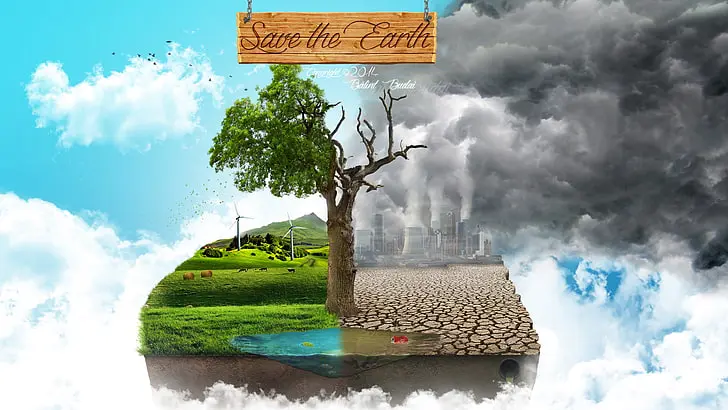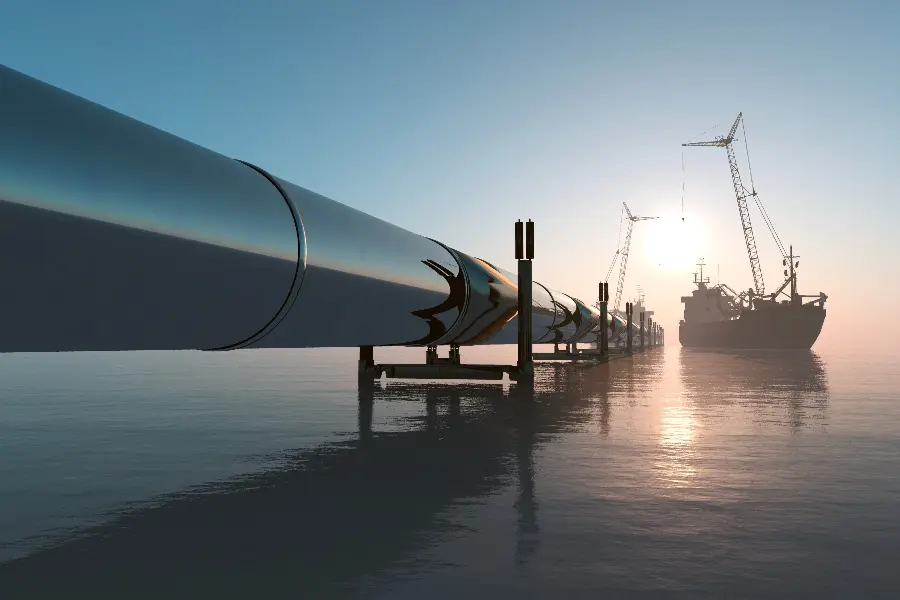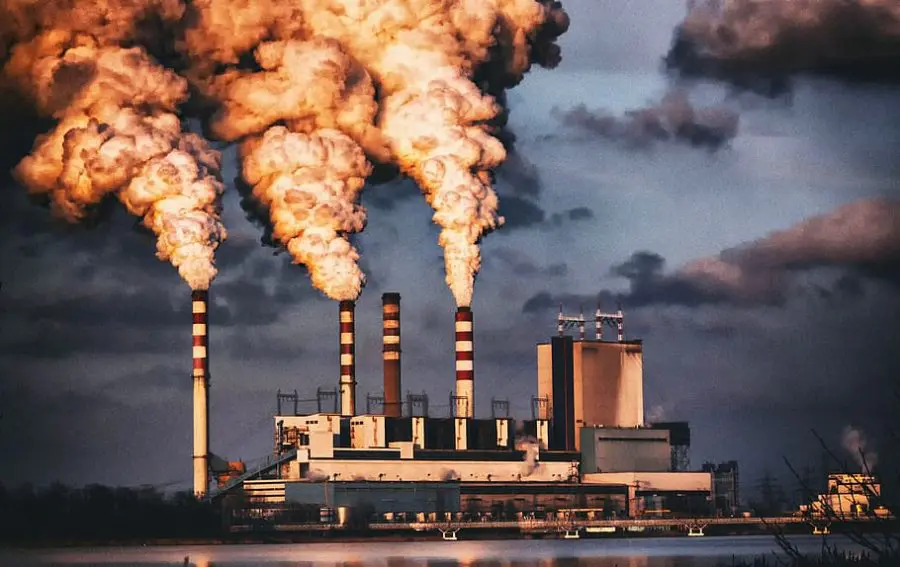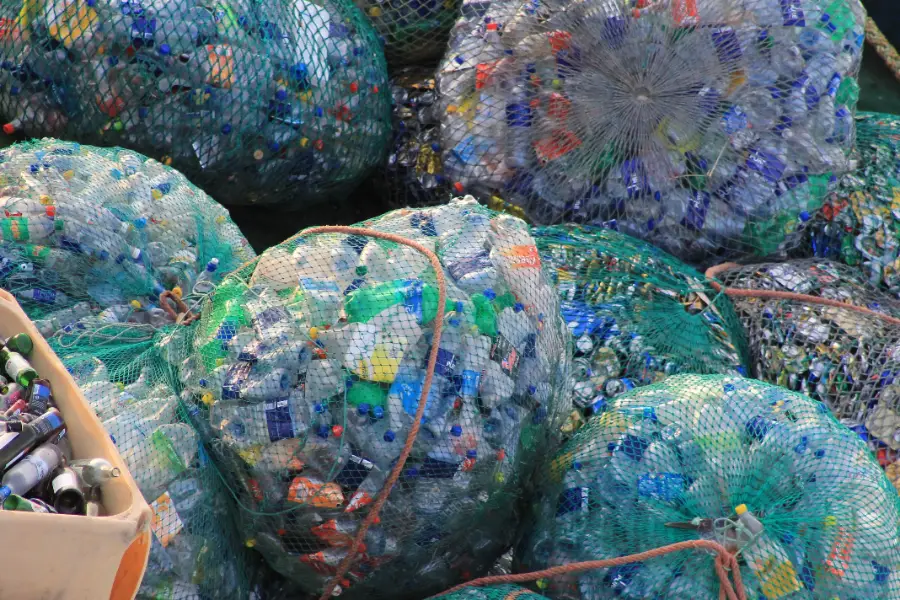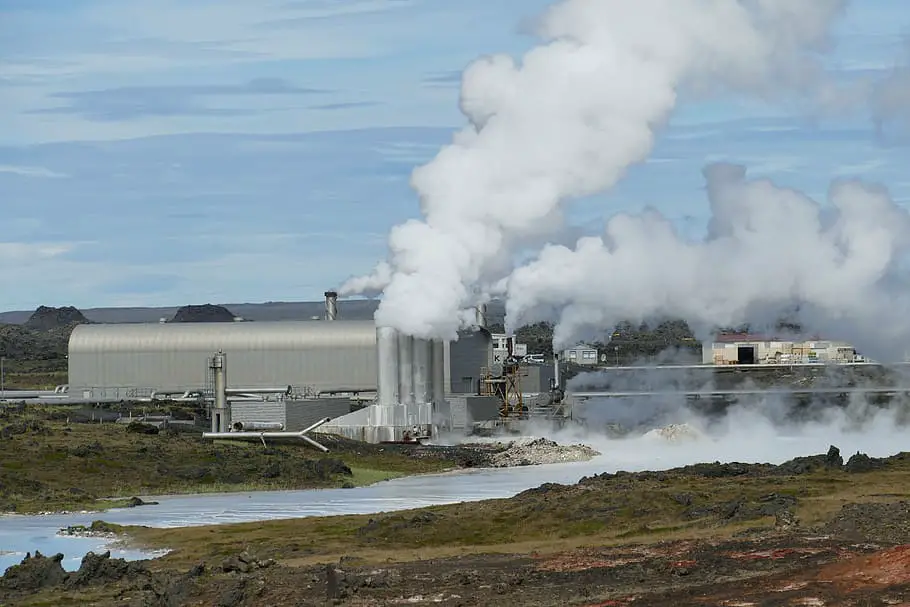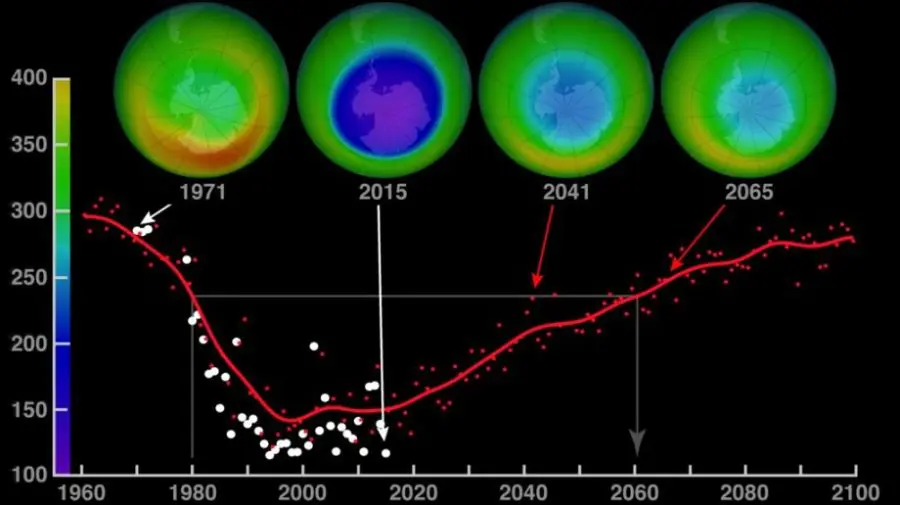
Does ozone depletion cause global warming? Join us as we unravel this complex environmental question in an easy-to-understand and engaging manner.
Have you ever found yourself wondering, does ozone depletion cause global warming?
It’s a question that has sparked many a debate among scientists and environmental enthusiasts alike.
As we navigate through this complex topic, we’ll delve into the intricacies of our planet’s atmosphere, the ozone layer, and the phenomenon of global warming.
So, grab a cup of your favorite brew, sit back, and let’s embark on this enlightening journey together.
Does Ozone Depletion Cause Global Warming?
Does ozone depletion cause global warming? Now, there’s a question that’s been making rounds in our minds, hasn’t it?
It’s time we put on our detective hats and delve into this environmental enigma.
In this post, we’ll be exploring everything from the basics of ozone depletion and global warming to their intriguing relationship.
We’ll also debunk common misconceptions and discuss potential solutions.
So, whether you’re a climate change enthusiast or just a curious reader, this post promises to be a fascinating journey. Let’s dive in, shall we?
Brief Explanation of the Topic
So, what’s all this buzz about ozone depletion and global warming? Let’s break it down.
Ozone depletion refers to the thinning of the ozone layer in the Earth’s stratosphere.
This layer is our planet’s protective shield, absorbing the majority of the Sun’s harmful ultraviolet rays.
When this shield weakens, more of these rays can reach the Earth’s surface, which can have harmful effects on our environment and our health.
Now, global warming is a different ball game.
It’s all about the gradual increase in the Earth’s average temperature, primarily caused by the increased levels of carbon dioxide, chlorofluorocarbons, and other pollutants in our atmosphere.
This rise in temperature can lead to a host of problems, including rising sea levels and extreme weather events.
Understanding the Relationship Between Ozone Depletion and Global Warming
You might be wondering, Why should I care about the relationship between ozone depletion and global warming?
Well, my friend, understanding this relationship is crucial for several reasons.
Firstly, both these phenomena have significant impacts on our planet’s climate and ecosystems.
They affect everything from weather patterns to the survival of various species.
Secondly, the actions we take to mitigate one can inadvertently affect the other.
For instance, some gases that are harmful to the ozone levels can also contribute to global warming.
By understanding the relationship between ozone depletion and global warming, we can make informed decisions about how to protect our planet. After all, we’re all in this together, aren’t we?
Understanding Ozone Depletion
Alright, now that we’ve set the stage, let’s dive a little deeper, shall we?
Our first stop is the ozone layer. You’ve probably heard of it, but what exactly is it and why is its depletion a cause for concern?
In this section, we’ll unravel the mystery of ozone depletion, exploring its causes, its effects, and why it’s a topic that deserves our attention.
So, buckle up and get ready for a fascinating journey into the world of atmospheric science!
Definition and Explanation of Ozone Depletion
Let’s start with the basics. The term ‘ozone depletion’ refers to the thinning of the ozone layer in the Earth’s stratosphere.
Picture the ozone layer as Earth’s sunglasses, protecting us from the Sun’s intense ultraviolet (UV) rays.
When this layer depletes, it’s like having a crack in our sunglasses, allowing more UV rays to reach us.
This depletion primarily occurs in two areas, the Antarctic ozone hole and the Arctic ozone hole, leading to what we commonly refer to as ‘ozone holes’.
Causes of Ozone Depletion
So, what’s causing our protective layer to thin out? The main culprits are certain man-made ozone-eating chemicals, particularly chlorofluorocarbons (CFCs), carbon tetrachloride, and hydrochlorofluorocarbons. In other words human activities are depleting the earth’s ozone layer.
These substances were once commonly used in air conditioning, refrigeration, aerosol cans, and as solvents.
When they are released into the atmosphere, they can stay there for a long time, gradually rising to the stratosphere.
Here, they are broken down by solar radiation and release chlorine and bromine molecules, which are capable of catalyzing reactions that destroy ozone.
Effects of Ozone Depletion on the Environment and Human Health
Now, let’s talk about why this is a big deal. The effects of ozone depletion are far-reaching and impact both the environment and human health.
On the environmental front, increased UV radiation can harm aquatic ecosystems, including plankton, which forms the base of the ocean food chain.
It can also lead to reduced crop yields and damage to plants.
As for human health, increased exposure to UV rays can lead to skin cancer and cataracts in humans.
It can also weaken the human immune system, making us more susceptible to diseases.
In a nutshell, the depletion of the ozone layer is a serious issue that affects all of us, from the smallest plankton to us humans.
It’s a global concern that requires our attention and action.
Understanding Global Warming
Now that we’ve got a handle on ozone depletion, let’s turn our attention to another hot topic, global warming.
You’ve probably heard the term thrown around in news headlines and climate change discussions. But what does it really mean?
And how does it impact our planet and our lives?
In this section, we’ll delve into the nitty-gritty of global warming, exploring its causes, its effects, and why it’s a topic that’s heating up conversations around the world.
Ready to turn up the heat? Let’s dive in!
Definition and Explanation of Global Warming
First things first, let’s define global warming. In the simplest terms, global warming refers to the long-term increase in Earth’s average temperature.
But it’s more than just feeling a little hotter in the summer. Global warming is about shifts in climate patterns, melting ice caps, and rising sea levels.
It’s a complex issue that’s linked to the amount of greenhouse gases in our atmosphere, which trap heat from the sun and warm the planet.
Causes of Global Warming
So, what’s causing our planet to heat up? The primary driver of global warming is human activity, particularly the burning of fossil fuels like coal, oil, and gas, and deforestation.
These activities increase the concentration of potent greenhouse gases in our atmosphere. We must do all we can to eliminate these powerful greenhouse gases through climate change mitigation. It is a matter of urgency.
The main greenhouse gas is carbon dioxide, but others like methane and nitrous oxide also play a significant role.
These gases trap heat from the sun in our atmosphere, leading to a ‘greenhouse effect’.
The more greenhouse gases we emit, the stronger this effect, and the warmer our planet becomes.
Effects of Global Warming on the Environment and Human Health
Now, let’s talk about why this warming trend is a big deal.
On the environmental front, global warming leads to melting ice caps and glaciers, which in turn leads to rising sea levels.
This can result in coastal flooding and the loss of habitats for many species.
Changes in temperature can also disrupt ecosystems and lead to the extinction of some species.
As for human health, the effects of global warming are equally concerning.
Rising global temperatures can lead to heat waves, which can cause heat stroke and other health problems.
Changes in climate can also affect the spread of infectious diseases, as some pathogens and vectors are highly sensitive to temperature and rainfall conditions.
In a nutshell, global warming is a significant issue that affects every corner of our planet and every aspect of our lives.
It’s a global challenge that requires global solutions.
The Relationship Between Ozone Depletion and Global Warming
Now that we’ve got a solid understanding of both ozone depletion and global warming, it’s time to explore their relationship.
You might be thinking, Do these two phenomena really affect each other?
It’s a great question and one that scientists have been investigating for years.
In this section, we’ll delve into the intriguing interplay between ozone depletion and global warming, and how they influence each other.
So, let’s put on our science caps and dive into this fascinating exploration!
How Ozone Depletion Contributes to Global Warming
Let’s start by looking at how ozone depletion contributes to global warming.
It’s a bit of a complex relationship but stick with me here. When the ozone layer is depleted, it becomes less effective at absorbing ultraviolet (UV) radiation from the sun.
This means more UV radiation can reach the Earth’s surface. While this extra UV radiation doesn’t directly cause global warming, it can contribute indirectly.
For instance, increased UV radiation can reduce the amount of phytoplankton in the oceans, which are key absorbers of carbon dioxide, a major greenhouse gas.
How Global Warming Impacts Ozone Depletion
Now, let’s flip the coin and look at how global warming impacts ozone depletion.
As the Earth’s surface temperature rises due to global warming, interestingly, the stratosphere (where the ozone layer is) actually cools.
This cooling can lead to increased formation of polar stratospheric clouds, which provide a surface for the chemical reactions that lead to ozone depletion.
So, in a way, global warming can exacerbate the conditions that lead to ozone depletion.
Scientific Studies and Evidence Supporting the Relationship
The relationship between ozone depletion and global warming is a topic of ongoing research.
Studies have shown that the two phenomena are interconnected in complex ways.
For instance, a study published in the journal Nature found that the recovery of the ozone layer over Antarctica could actually intensify global warming in the Southern Hemisphere.
Another study in the Journal of Geophysical Research found that ozone depletion has been a significant driver of climate change in the Southern Hemisphere.
In essence, while ozone depletion and global warming are distinct phenomena, they are intertwined in ways that scientists are still working to fully understand.
It’s a fascinating and important area of research, as understanding these connections can help us develop more effective strategies to protect our planet.
Common Misconceptions About Ozone Depletion and Global Warming
As we delve deeper into the world of ozone depletion and global warming, it’s important to clear up some common misconceptions.
You see, these topics can be quite complex and, let’s face it, a bit confusing.
This can lead to misunderstandings and myths that cloud our understanding.
In this section, we’ll shine a light on these misconceptions and set the record straight.
So, if you’ve ever been puzzled by these topics or found yourself tangled in a web of climate change myths, this section is for you.
Let’s bust some myths together, shall we?
Clarifying the Differences Between Ozone Depletion and Global Warming
First off, let’s clear up a common misconception: ozone depletion and global warming are not the same thing.
They are distinct phenomena, each with its own causes and effects.
Ozone depletion, as we’ve discussed, refers to the thinning of the ozone layer in the Earth’s stratosphere.
It’s primarily caused by man-made chemicals like chlorofluorocarbons (CFCs) that release chlorine and bromine when they break down.
The main concern with ozone depletion is the increased amount of harmful UV radiation that can reach the Earth’s surface.
On the other hand, global warming refers to the long-term increase in Earth’s average temperature.
This is primarily caused by the increase in greenhouse gases like carbon dioxide in our atmosphere, largely due to the burning of fossil fuels and deforestation.
The main concern with global warming is the wide range of climate changes it can cause, from rising sea levels to more extreme weather events.
While these two phenomena can influence each other in complex ways, they are fundamentally different issues with different primary causes.
Debunking Myths About the Effects of Ozone Depletion on Global Warming
Now, let’s debunk a common myth: that ozone depletion is a major cause of global warming.
While it’s true that ozone depletion and global warming can influence each other, the idea that the ozone hole is a major driver of global warming is a misconception.
As we’ve discussed, the primary driver of global warming is the increase in greenhouse gases in our atmosphere, not the thinning of the ozone layer.
In fact, the extra UV radiation that reaches the Earth’s surface due to ozone depletion is too small to significantly contribute to global warming.
That being said, it’s important to understand that both ozone depletion and global warming are serious environmental issues that need our attention.
They both have significant impacts on our planet and require concerted global efforts to address.
Solutions and Mitigation Strategies
Now that we’ve explored the complexities of ozone depletion and global warming, you might be wondering, What can we do about it?
Well, you’re in luck! In this section, we’re going to explore the various solutions and mitigation strategies that can help us tackle these environmental challenges.
From international efforts to individual actions, there’s a lot we can do to make a difference.
So, if you’re ready to roll up your sleeves and learn how we can help protect our planet, let’s dive in!
International Efforts to Combat Ozone Depletion and Global Warming
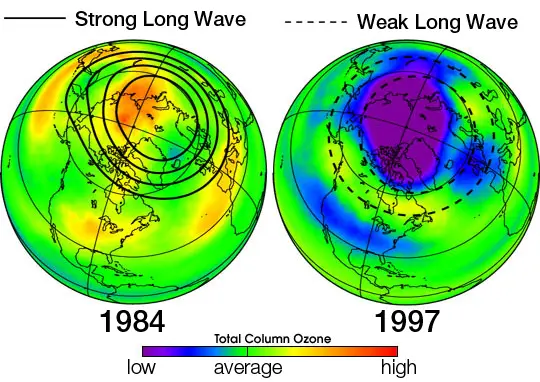
When it comes to tackling global issues like ozone depletion and global warming, international agreement and cooperation is key.
Over the years, the global community has come together to take action.
One of the most successful examples of this is the Montreal Protocol. Signed in 1987, this international treaty was designed to protect the ozone layer by phasing out the production of numerous substances responsible for ozone depletion.
It’s been incredibly successful, with nearly 100% compliance from countries around the world. Ozone recovery is happening and atmospheric ozone levels are recovering thanks to this ozone action.
In fact, thanks to the Montreal Protocol, the ozone layer is expected to recover to 1980 levels by around 2070.
In terms of global warming, the Paris Agreement is a landmark international accord that aims to limit global warming to well below 2 degrees Celsius above pre-industrial levels.
It also aims to pursue efforts to limit the temperature increase to 1.5 degrees Celsius.
The agreement requires all participating countries to put forward their best efforts to reduce their greenhouse gas emissions and to enhance their efforts over time.
Individual Actions to Reduce Ozone Depletion and Global Warming
While international efforts are crucial, we as individuals also have a significant role to play in combating ozone depletion and global warming.
To help reduce ozone depletion, we can make sure to properly dispose of old air conditioners, refrigerators, and other appliances that contain ozone-depleting substances.
We can also choose products that are labeled as ozone-friendly.
As for global warming, there are numerous actions we can take.
These include reducing, reusing, and recycling; conserving energy; using renewable energy sources; and reducing our carbon footprint by choosing sustainable transportation options, like biking, walking, or public transit, whenever possible.
Remember, every little bit helps. By taking these actions, we can all contribute to the protection of our planet.
After all, we’re not just inhabitants of Earth, we’re its caretakers.
Does Ozone Depletion Cause Global Warming FAQs
As we journey through the world of ozone depletion and global warming, it’s natural to have a few questions popping up.
In fact, some questions seem to come up more often than others. That’s why in this section, we’re going to tackle some of the most frequently asked questions about these topics.
So, if you’ve been scratching your head over certain aspects of ozone depletion and global warming, stick around.
We’re about to shed some light on those burning questions!
Q: How does ozone depletion affect climate change?
A: Ozone depletion can influence climate change in several ways. For one, the ozone layer in the stratosphere absorbs solar radiation, warming the stratosphere.
When the ozone layer is depleted, less solar radiation is absorbed in the stratosphere, which can lead to cooling of the stratosphere and changes in atmospheric circulation patterns.
These changes can, in turn, affect weather and climate at the Earth’s surface.
Additionally, some substances that deplete the ozone layer also contribute to global warming, further linking these two phenomena.
Q: What is the difference between ozone depletion and global warming?
A: While both ozone depletion and global warming are environmental issues related to the atmosphere, they are distinct phenomena.
Ozone depletion refers to the thinning of the ozone layer in the Earth’s stratosphere, primarily caused by man-made chemicals that release chlorine and bromine.
The main concern with ozone depletion is the increased amount of harmful UV radiation that can reach the Earth’s surface.
On the other hand, global warming refers to the long-term increase in Earth’s average temperature, primarily caused by the increase in greenhouse gases in our atmosphere.
The main concern with global warming is the wide range of climate changes it can cause, from rising sea levels to more extreme weather events.
Q: Does depletion of the ozone layer cause global warming?
A: While ozone depletion and global warming can influence each other in complex ways, it’s a misconception that ozone depletion is a major cause of global warming.
The primary driver of global warming is the increase in greenhouse gases in our atmosphere, not the thinning of the ozone layer.
The extra UV radiation that reaches the Earth’s surface due to ozone depletion is too small to significantly contribute to global warming.
Q: How is global warming related to ozone layer depletion?
A: Global warming and ozone depletion are interconnected in several ways.
For instance, as the Earth’s surface temperature rises due to global warming, the stratosphere (where the ozone layer is) actually cools.
This cooling can lead to increased formation of polar stratospheric clouds, which provide a surface for the chemical reactions that lead to ozone depletion.
So, in a way, global warming can exacerbate the conditions that lead to ozone depletion.
Additionally, some gases that contribute to global warming also deplete the ozone layer, further linking these two issues.
Does Ozone Depletion Cause Global Warming Final Thoughts
As we draw our exploration to a close, it’s time to reflect on what we’ve learned about ozone depletion and global warming.
These are complex issues, but understanding them is crucial for our future.
In this final section, we’ll recap the main points and consider why addressing both ozone depletion and global warming is so important.
So, as we wrap up our journey, let’s take a moment to look back and reflect on the path we’ve traveled. Ready? Let’s dive in!
Recap of the Main Points
We’ve covered a lot of ground in our exploration of ozone depletion and global warming.
We started by defining these two phenomena and understanding their causes and effects.
We learned that while they are distinct issues, they are interconnected in complex ways.
We discovered that ozone depletion refers to the thinning of the ozone layer in the Earth’s stratosphere, primarily caused by man-made chemicals.
This depletion allows more harmful UV radiation to reach the Earth’s surface, which can have significant impacts on human health and the environment.
On the other hand, global warming refers to the long-term increase in Earth’s average temperature, primarily caused by the increase in greenhouse gases in our upper atmosphere.
This warming can lead to a wide range of climate changes, from rising sea levels to more extreme weather events.
We also debunked some common myths and misconceptions about these issues, and explored various solutions and mitigation strategies, from international efforts like the Montreal Protocol and the Paris Agreement to individual actions we can all take to help protect our planet.
Final Thoughts on the Importance of Addressing Both Ozone Depletion and Global Warming
As we conclude, it’s important to reflect on why addressing both ozone depletion and global warming is so crucial.
These are not just scientific issues, but issues that affect every aspect of our lives, from our health to the environment we live in.
While these challenges may seem daunting, the good news is that we have the knowledge and the tools to tackle them.
By understanding these issues, taking action in the international community, and supporting policies that protect our planet, we can all contribute to a healthier and more sustainable future.
Remember, every little bit helps. Whether it’s reducing our carbon footprint, properly disposing of old appliances, or simply spreading awareness about these issues, each climate action we take brings us one step closer to preserving our beautiful planet for generations to come.

